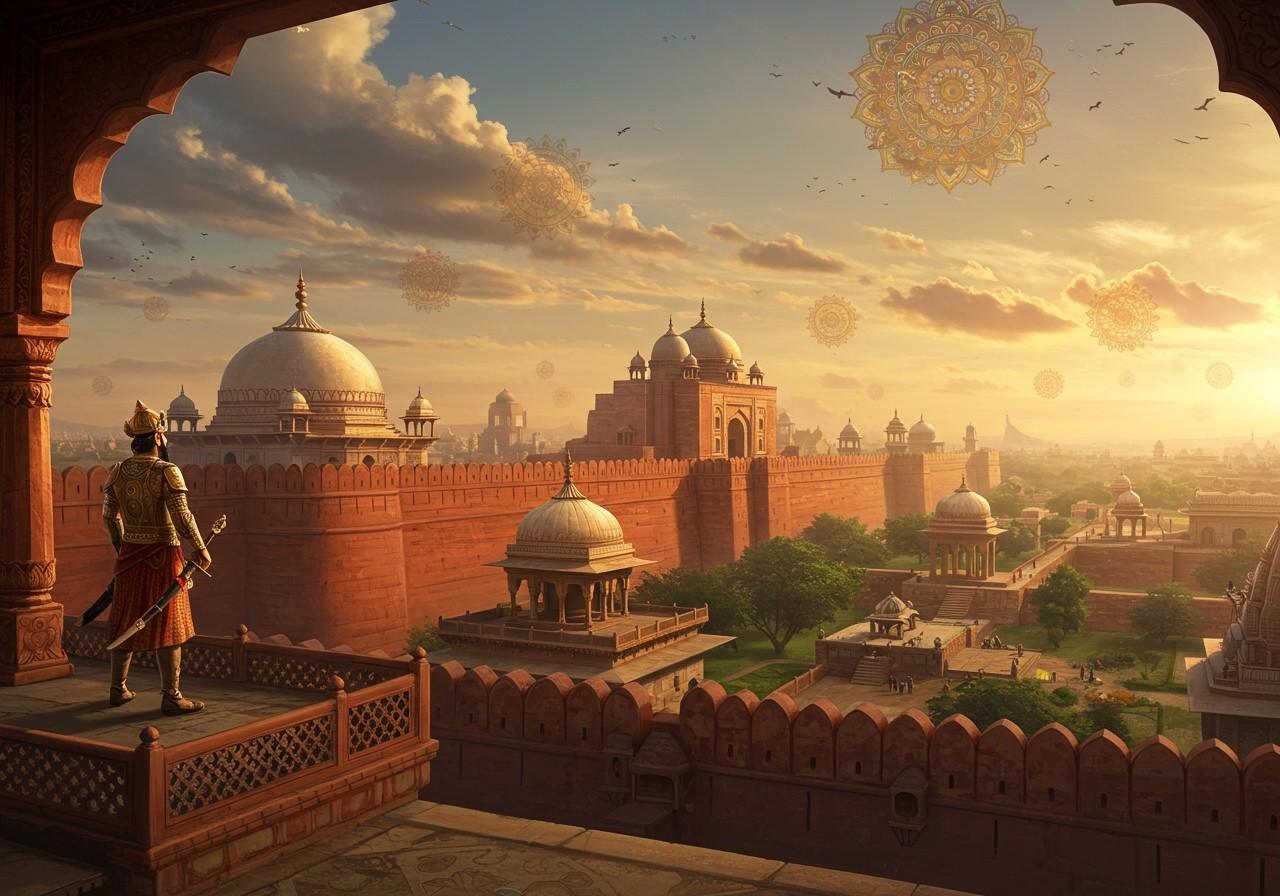
The Tomara Dynasty holds a significant place in the annals of Indian history, particularly in the Delhi region. This dynasty, known for its Rajput heritage, shaped the political and cultural landscape of the region for centuries. This article delves into the origins, reign, achievements, and eventual decline of the Tomara Dynasty, providing insights into their contributions to India’s rich historical tapestry.
Origins and Rise of the Tomaras
Emerging from the Rajput clans of ancient India, the Tomaras were known for their valor and warrior ethos. They established themselves in the Delhi region around the 9th century CE, a period marked by numerous small kingdoms vying for power across India. Their Rajput background played a crucial role in shaping their warrior culture and administrative practices.
- Geographical and Political Context: The Tomaras emerged during a time when India’s political landscape was fragmented, with numerous small kingdoms constantly interacting through alliances and conflicts. This environment presented both challenges and opportunities for the nascent dynasty.
- Rajput Heritage and Warrior Ethos: The Tomaras’ Rajput heritage instilled in them a strong martial tradition, emphasizing valor, honor, and loyalty. This warrior ethos was instrumental in their rise to prominence and their ability to establish a foothold in the Delhi region.
- Early Rulers and Consolidation of Power: The early Tomara rulers demonstrated strategic acumen and military prowess, gradually consolidating their power in Delhi and the surrounding areas. They laid the foundation for the dynasty’s future growth and influence.
The Tomaras of Delhi: Forging a Capital
Delhi became a central hub of power for the Tomaras. The city’s strategic location was key to their dominance, facilitating trade and enabling control over vital resources. Under their rule, Delhi underwent significant development, transforming into a prominent political and cultural center.
- Delhi’s Strategic Significance: Delhi’s location on the plains of North India, near the Yamuna River, gave the Tomaras a strategic advantage. It was a crossroads of trade routes and a fertile agricultural region, contributing to their economic and political strength. Just as Odisha’s sacred sites mark a journey through history, so too does Delhi’s under the Tomaras.
- Architectural and Cultural Advancements: The Tomaras contributed significantly to Delhi’s architectural landscape, constructing forts, temples, and other structures that showcased their patronage of the arts. These architectural marvels served as symbols of their power and cultural refinement.
Tomaras and Chauhans: A Shifting Power Dynamic
The relationship between the Tomaras and the Chauhans, another prominent Rajput dynasty, significantly influenced the course of history in the Delhi region. This relationship was marked by both alliances and conflicts, ultimately leading to the Tomaras’ decline.
- From Alliance to Conflict: Initially, the Tomaras and Chauhans experienced periods of cooperation, possibly through strategic alliances. However, over time, their relationship evolved into rivalry, marked by battles and shifting power dynamics.
- The Rise of the Chauhans and the Tomaras’ Decline: The Chauhans, under rulers like Prithviraj Chauhan, gradually expanded their influence, eventually eclipsing the Tomaras. The rise of the Chauhans directly contributed to the decline and eventual fall of the Tomara Dynasty.
Prominent Tomara Rulers and Their Legacies
Several Tomara rulers left a lasting legacy, shaping the dynasty’s trajectory and contributing to the development of Delhi. Anangpal Tomar I is often credited with founding the city of Delhi and establishing its first fortifications. Madanpal Tomar further enhanced Delhi’s architectural landscape with the construction of several temples.
Cultural and Architectural Contributions of the Tomaras
The Tomaras’ influence on the cultural and architectural landscape of Delhi was substantial. Their patronage of the arts and literature fostered intellectual activity, while their Rajput traditions enriched the region’s cultural heritage. The forts, temples, and other structures they built stand as testaments to their architectural prowess and cultural contributions. Much like the Chalukya Dynasty’s architectural feats in Badami, the Tomaras left their own mark on Delhi.
The Decline and Fall of the Tomara Dynasty
The decline of the Tomara Dynasty was a gradual process, precipitated by a combination of external pressures and internal conflicts. The rise of the Chauhans, coupled with invasions from neighboring regions and internal disputes over succession, weakened the Tomaras’ hold on power. By the 12th century CE, the Tomara Dynasty had effectively come to an end, giving way to the Chauhan dynasty’s dominance in Delhi.
Poojn.in: Connecting You with India’s Rich Cultural Heritage
Poojn.in, India’s leading online store for cultural and religious goods, offers a wide selection of products to support your spiritual journey. Explore our collection of authentic puja items, idols, and more, carefully curated to honor India’s rich traditions. Discover exquisite Ganesha idols and other sacred items to enhance your spiritual practices.
Conclusion: The Enduring Legacy of the Tomaras
The Tomara Dynasty, despite its eventual decline, left an indelible mark on the history of Delhi. Their contributions to the city’s development, architectural landscape, and cultural heritage continue to resonate today. Their story serves as a reminder of the dynamic nature of power and the enduring legacy of those who shape history.


